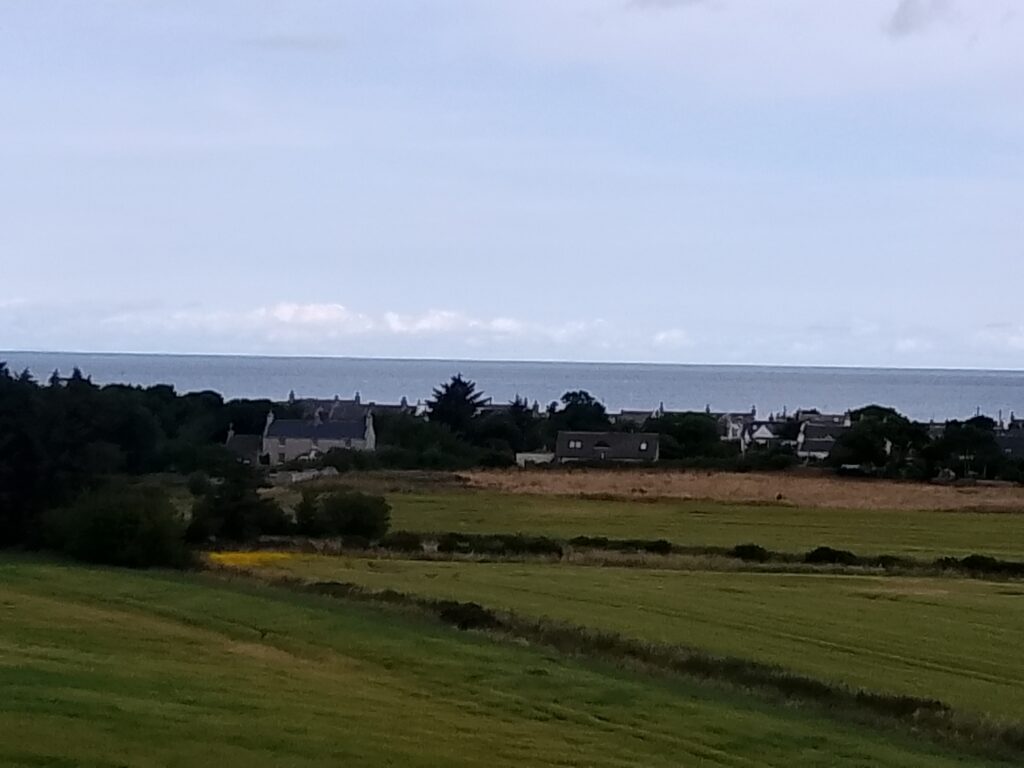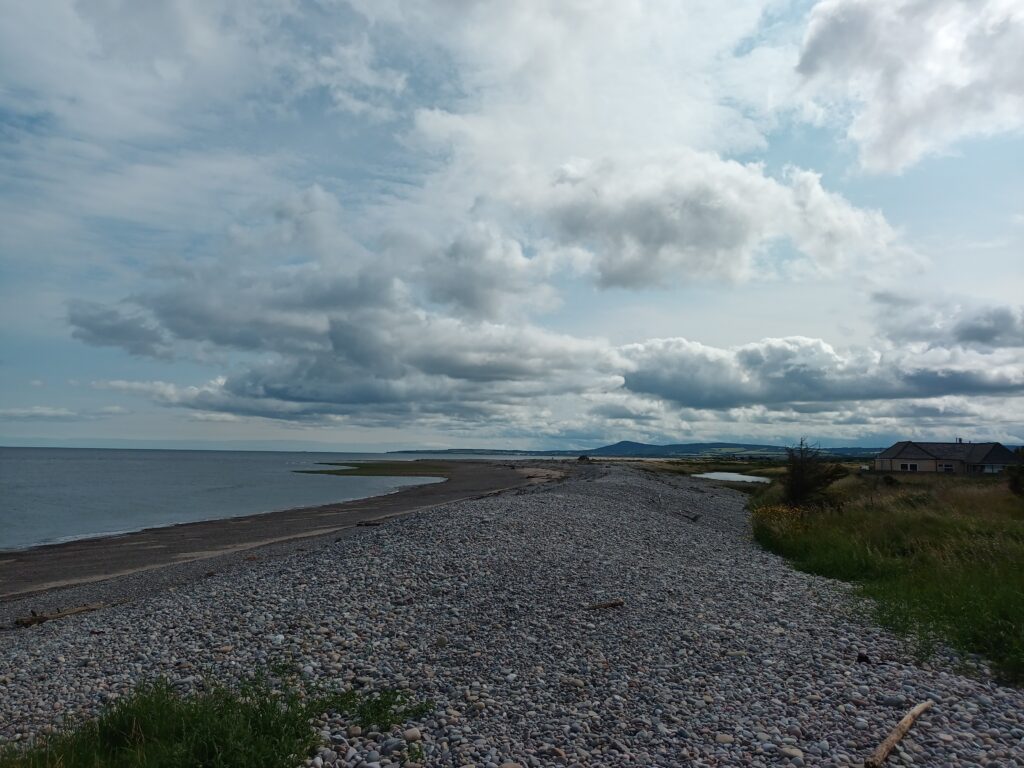Guided Walk around Garmouth and Kingston, led by Rob Wallen.
Thursday, 4th July 11am
Seventeen members took part in this exceptionally interesting and informative walk. As it was over subscribed, a further sixteen members joined a second walk on Thursday, 11th July. Seven of us took the m-connect bus to Garmouth from Elgin Bus Station, number 334 via Linkwood, Ashgrove and Lhanbryde, leaving at 10.30am and returning at 3pm.
We met Rob Wallen and the other members at the Garmouth Community Hub where tea and coffee was served before setting off on the tour. The Hub is situated in Maclean’s buildings in the High Street and houses a small exhibition and shop and a lovely community garden. It is run by the Garmouth and Kingston Amenities Association, whose secretary is Rob Wallen. Over the last few years Garmouth has lost its shop and post office, its hotel and pub, so the community got together in 2021 to provide another venue for village activities.
Our first stop was the Garmouth Water Tower, which we reached by a narrow path over a field through tall grasses. The water tower (1899) is the highest point in the village and an excellent view point. Rob explained the geology of the area, and how the Spey has altered its course over the centuries. The underlying bedrock is sandstone, but in the Garmouth area this has been overlain by sand and gravel deposited since the last Ice Age. There is no evidence of prehistoric peoples or Roman activity in this area, but just below the tower is a group of boulders, possibly indicating a bronze age ceremonial site. From this viewpoint, we joined the Moray Coastal path and descended towards Kingston. In the middle ages Garmouth was the main port for Elgin, after Spynie became unusable and before Lossiemouth was built. In the 18th century, the port of Garmouth was renamed Kingston after entrepreneurs from Kingston on Hull set up a shipbuilding industry, using timber floated down the river from the Spey Valley. It remained an important centre for shipbuilding for over 100 years. Other industries developed as a result – rope making, sail making, ships’ chandlers, banking, gasworks…..Garmouth was a thriving and prosperous community. But by the end of the 19th century the shipbuilding days were over, and transport was provided by the railway (1884) rather than the sea.
Down at Kingston we stood on the constantly changing shingle shore and Rob told us about the stone extraction industry that developed in the 20th century and the attendant precast concrete works. Nothing now remains of this except for lumps of concrete amongst the shingle. The natural vegetation has now regenerated and is a haven for wildlife. This is the area known as the Lein.
We walked back across the playing fields to the village of Kingston, admiring the cottages and the grander shipbuilders’ houses and then walked up the main road back to Garmouth, where Rob told us something about the more recent history of the village. Our last stop was at the plaque commemorating the arrival of the exiled Charles Stuart from Holland and the signing of the Solemn League and Covenant in 1650.
This report cannot begin to do justice to everything that Rob told us. It was a remarkable tour through hundreds of years of history. To find out more , you could read Rob’s article in the 2023 edition of the Moray Field Club Bulletin – Garmouth and Kingston, an historical overview
Rob has also written several books about Garmouth, notably Garmouth and Kingston, a brief history. This and other books are available to purchase at the Hub.
In spite of a very gloomy weather forecast, we only experienced a couple of squally showers and were able to sit outside for tea and coffee before and after the walk. Many thanks to Rob Wallen for such a memorable day. You can follow the Community Hub activities on Facebook.


